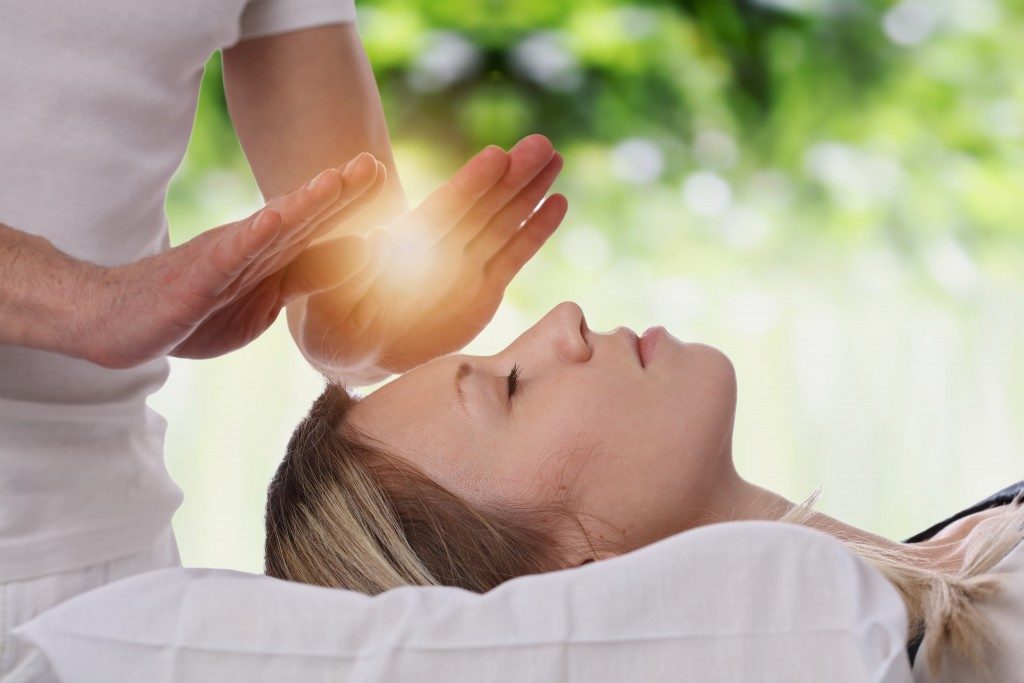Reiki is a non-invasive, alternative form of healing therapy where practitioners or therapists transfer universal energy to the recipient by means of touch.
Originating from Japan in the late 1800s, Reiki comes from two Japanese words – Rei, which means “Universal”, and Ki which means “Life Energy”. Reiki healers believe that when a person experiences physical injury or emotional pain, energy can stagnate in the body and block the flow of energy, which may result in illness.
Reiki healing aims to remove the blockages, similar to what acupuncture does, and to release the flow of energy throughout the body to enable relaxation, accelerate the healing process, or reduce pain and other symptoms of illness.
Those who aspire to be a Master Reiki Healer need to complete three levels of Reiki Healing Courses. Reiki courses include theory, attunement, and healing techniques. Depending on the level, students will be able to learn the different Reiki symbols and what purpose they serve. Below are the three levels of Reiki attunement:
Reiki Level 1 – Basic Level (Shoden)
In a Reiki Level 1 course, students will learn about the basic concepts of Reiki healing. They will be trained on how to perform Self-Reiki and how to give Reiki to others. On this level, energy healing is primarily on a physical and personal level.
Reiki Level 2 – Advanced Level (Okuden)
Students who move up to the Reiki Level 2 course will learn about the first three Reiki symbols. They will also learn how to perform distant Reiki healing, where they can transfer energy over time and space. Students who complete a Reiki Level 2 course are considered Reiki practitioners.
Reiki Level 3 – Master Level (Shinpiden)
Reiki Level 3 is the spiritual level of Reiki. At this level, Reiki is no longer just a method to heal one’s self and others but is considered a way of life. Attending a Reiki Level 3 course will enable students to learn the master Reiki symbol and different Reiki techniques.
Symbols of Reiki

Power Symbol
The power symbol, or Cho Ku Rei, is often related to a light switch as its intention is to activate and boost the healer’s abilities. This symbol resembles a coil and is typically used at the beginning or end of a session, though it can also be used at any time during the treatment. The Cho Ku Rei can be used as a catalyst for physical healing, cleansing, and purification. It can also be used for protection and focus.
Harmony Symbol
Sei Hei Ki symbolizes harmony and it is used for mental and emotional healing. The harmony symbol looks like a wave hitting the beach or a wing of a bird in flight. This symbol aims to provide a balance between the brain and the body. It is useful in helping people recover from physical or emotional trauma, overcome anxiety and depression, or get rid of a bad habit.
Distance Symbol
Hon Sha Ze Sho Nen, sometimes called a pagoda for its tower-like structure, is used in sending energy across a long distance. This symbol gives access to the life records of the soul or the “Akashic Records”. It is also used to increase spiritual connection and dispel trauma from past life experiences.
Master Symbol
Dai Ko Myo is one of the most powerful Reiki symbols as it combines the power of Cho Ku Rei, Sei Ki, and Hon Sha Ze Sho Nen. The symbol means “Great Enlightenment” and is considered the heart of Reiki. The healing powers of the Master symbol are all-encompassing, healing the upper chakras, the aura, and the soul.
Completion Symbol
The Raku symbol, also known as the “fire serpent”, resembles the shape of lightning. It is used at the final stage of the Reiki attunement process with the intention of clearing negative energy, settling the body, and sealing the awakened energy within.
As discussed above, the five Reiki symbols can be used for different intentions. By attending Reiki healing course, one can grow attuned to these symbols to experience and share the healing effects of Reiki.



